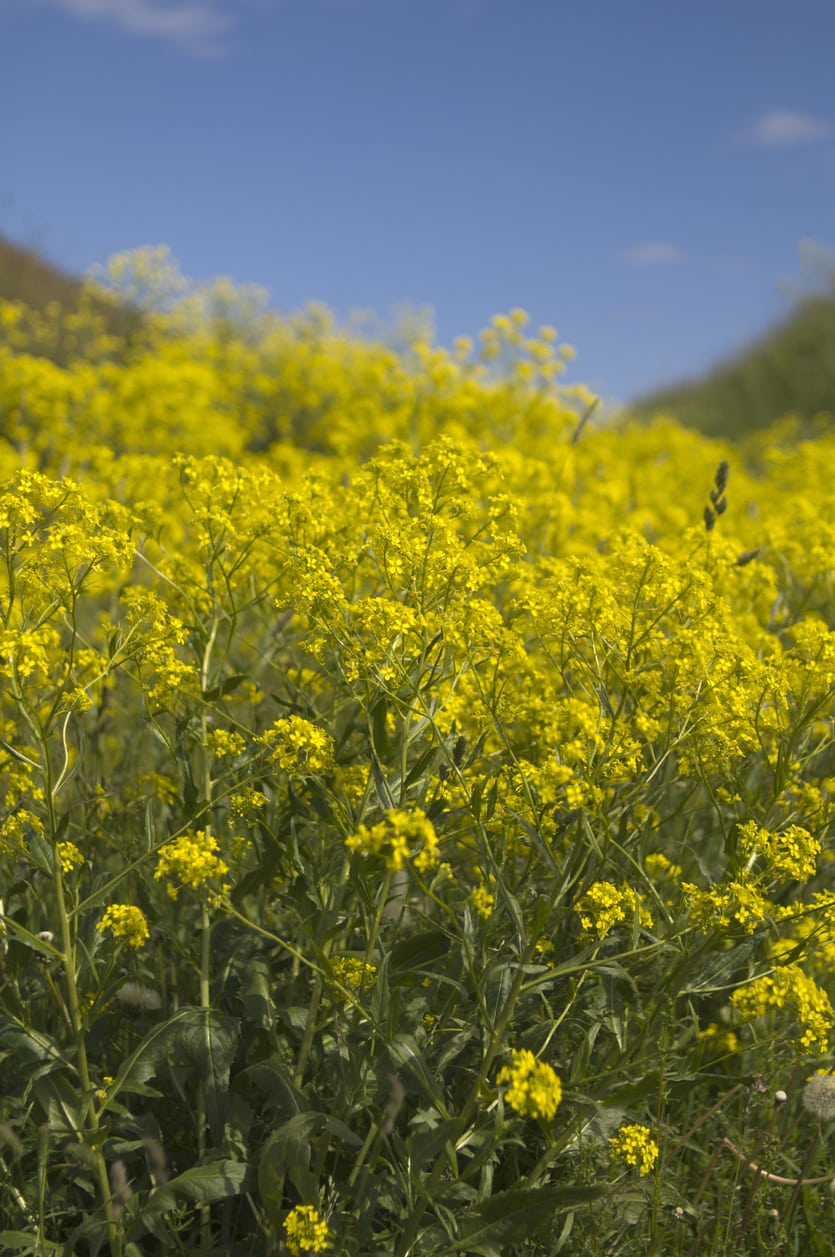Dyeing With Woad – How To Get Dye From Woad Plants


You don't need to be a prepper to love the look of home-dyed wool. DIY dyed yarn and fabric allows you to control the colors as well as the chemical process. Woad is a plant that has been used as a natural dye for centuries. Extracting dye from woad takes a little practice, but it is worth it. When prepared properly, dye from woad plants results in a sky envying blue. You must follow all instructions for making woad dye or you might end up with dismal greenish yellow tones.
Dyeing with Woad
The process of making natural dyes isn't dead yet. Many self-taught enthusiasts have the formulas to create a rainbow of natural hues from plants. Woad is a biennial plant with long, rabbit ear leaves. These are the source of a wonderful dye when prepared with the proper steps. Learn how to make dye out of woad and create brilliant blue yarn and fabric. Deep blue colors once came from indigo and woad before chemical dyes were produced. Woad has been used since the Stone Age and was the source of the body paint used by the Picts. Woad balls were an important trade item until cultivation of the plant was restricted in the late 1500's. Eventually, Asian produced indigo replaced the plant, although some dye from woad plants was produced up until 1932, when the last factory closed. Extracting dye from woad was done by "waddies," generally family groups that harvested and produced the dye in mills. These mills were moveable, since woad depletes soil and must be rotated.
How to Make Dye Out of Woad
Making woad dye is a lengthy process. The first step is to harvest leaves, and you will need a lot. Cut off leaves and wash them thoroughly. Tear or cut up the leaves and then steep them in water that is 176 degrees F. (80 C.) for 10 minutes. Let the mixture cool in an ice bath. This is crucial to retaining the blue color. Next, strain the leaves and squeeze them to get out all the liquid. Add 3 teaspoons (15 g.) of soda ash to a cupful of boiling water. Then add this liquid to the strained dye. Use a whisk for 10 minutes to mix and create a frothy brew. Dip out the brew into jars and let it settle for several hours. The pigment at the bottom is your woad dye. The liquid needs to be strained from the sediment. Very fine cheesecloth or other closely woven cloth can be used to facilitate the process. You can then dry the sediment for storage or use it straight away. To use it, liquidate the powder with water and add a tiny bit of ammonia. Heat the mixture up to a light simmer. Dip your yarn or fabric in boiling water prior to immersing it in the dye. Depending upon the color you require, you may need repeated dips in the dye mixture. Initially, the color will be greenish yellow but oxygen exposure helps develop the blue hue. In other words, the more dips, the deeper the color will become. You now have an all-natural indigo color tailor made to your needs.
Sign up for the Gardening Know How newsletter today and receive a free copy of our e-book "How to Grow Delicious Tomatoes".

Bonnie Grant is a professional landscaper with a Certification in Urban Gardening. She has been gardening and writing for 15 years. A former professional chef, she has a passion for edible landscaping.